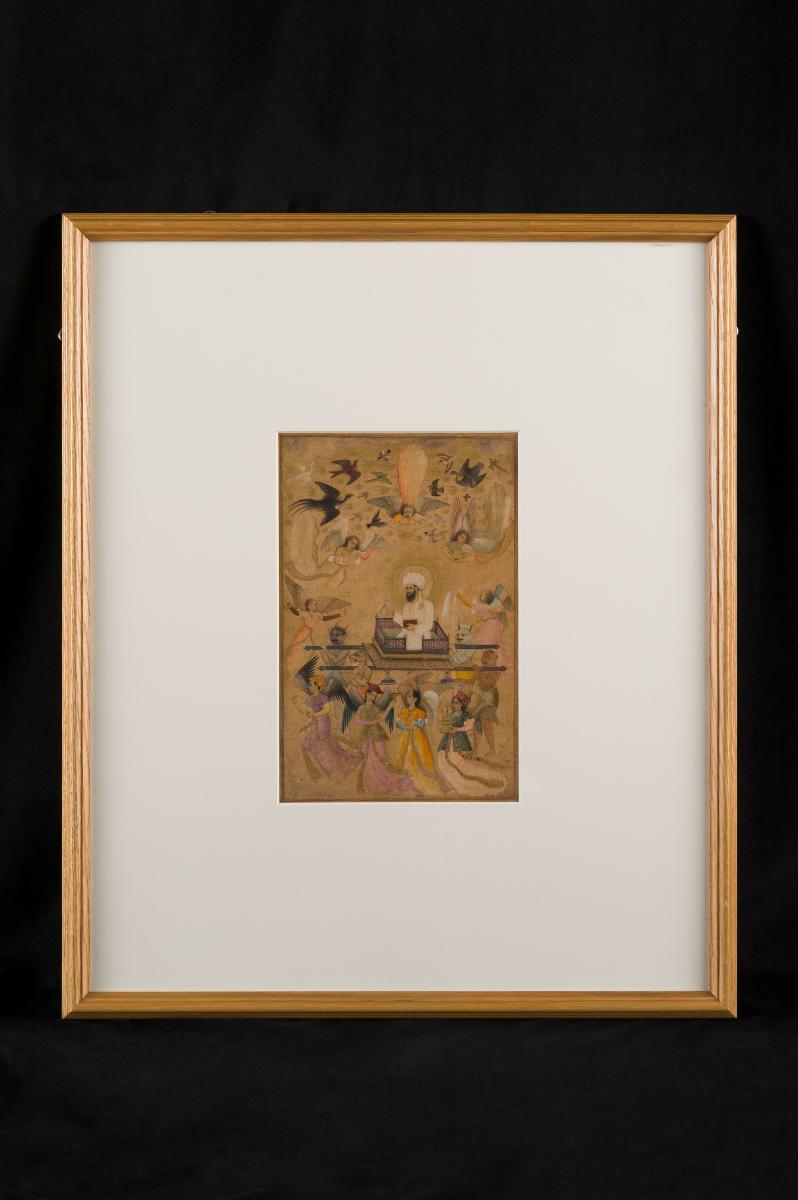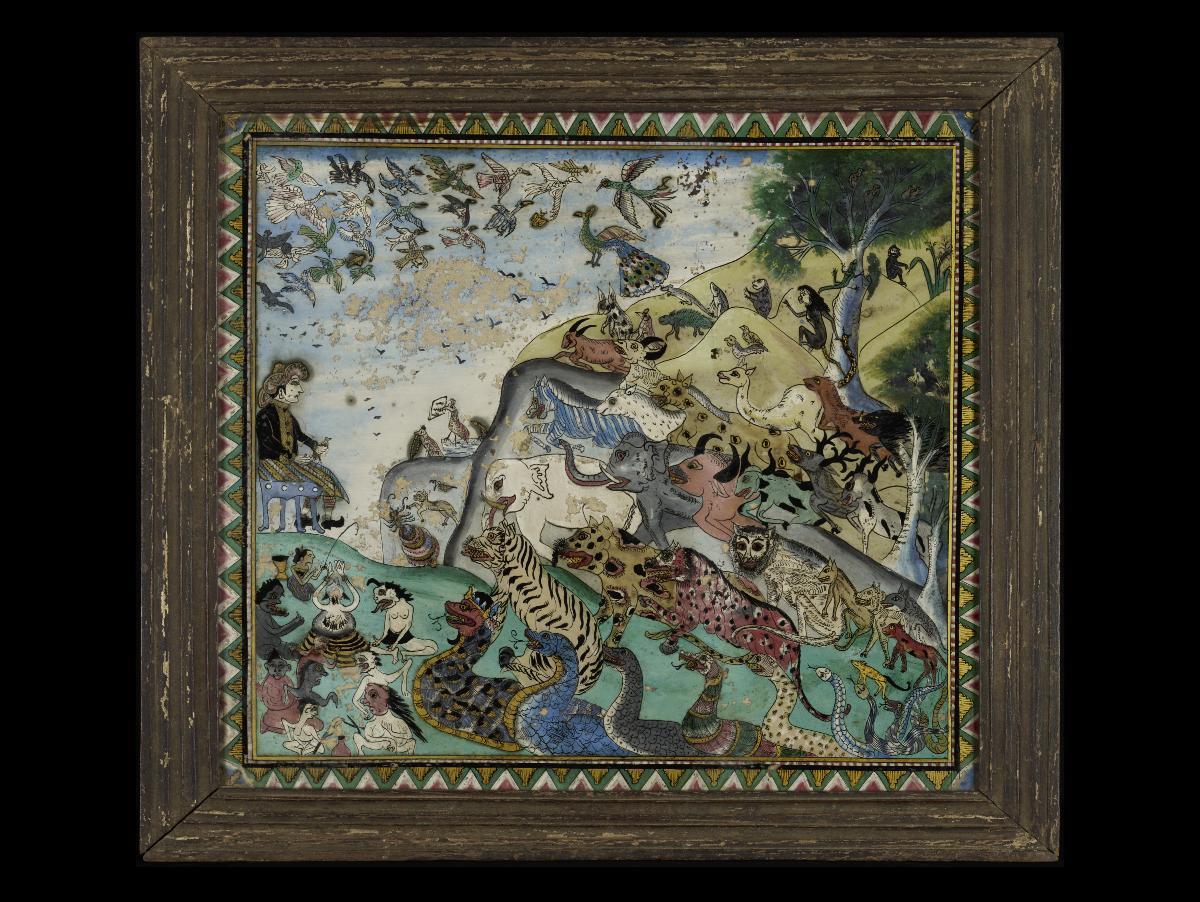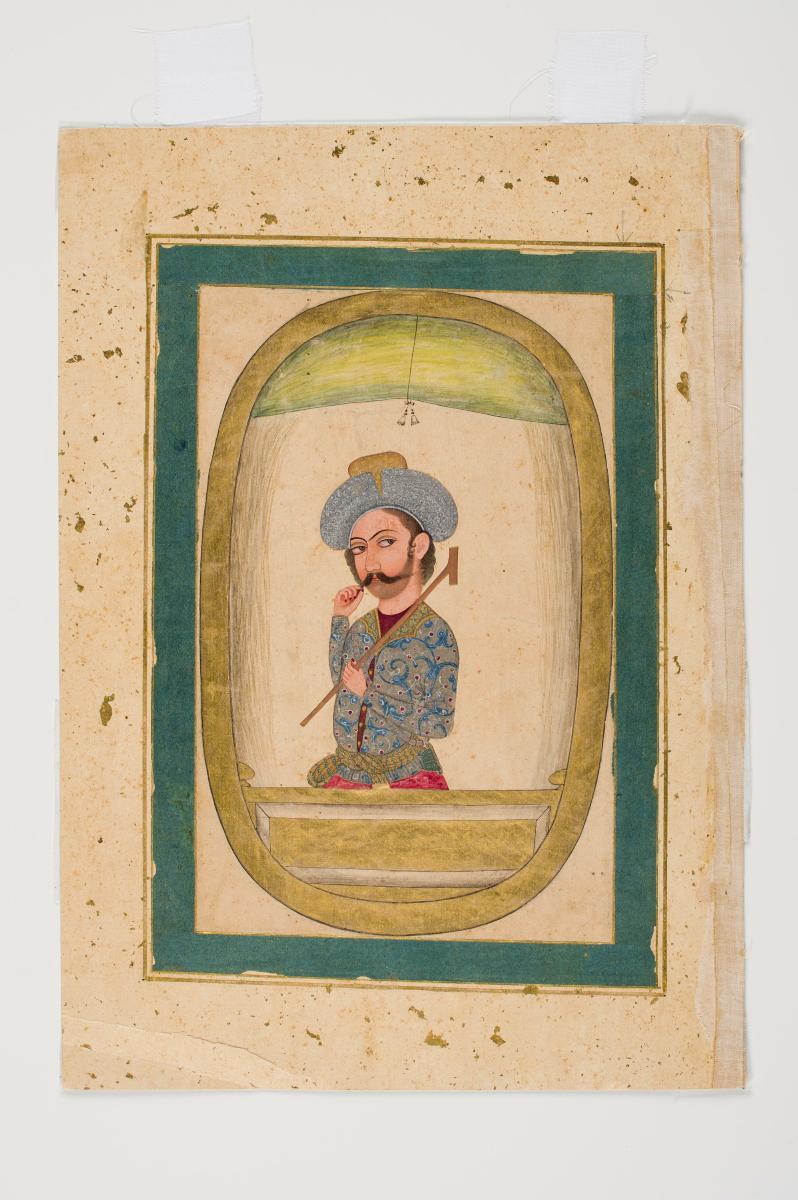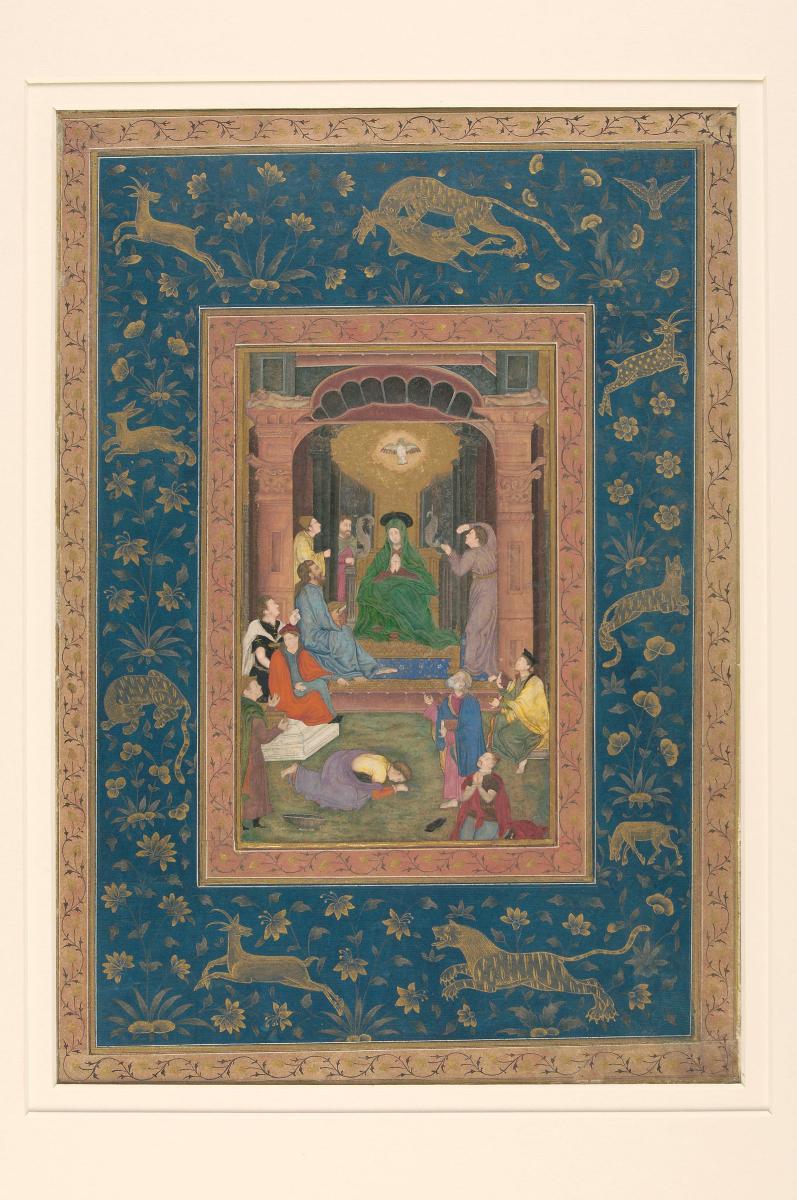King Solomon is depicted frequently in Islamic art and epitomizes the concept of the ideal just and wise ruler. When Islam was founded in the seventh century AD, there was considerable Jewish influence in Arabia. Many Old Testament stories and Jewish folklore were incorporated into the Qur'an. Solomon is portrayed in the Qur'an as a great and wealthy king, who reigned over nature and djinn (demons). He is also depicted as a prophet of God, Sulaiman. Believing that the Queen of Sheba worshipped the sun instead of God, Solomon wrote her a letter sent via his messenger, the Hoopoe bird, calling her to come to him 'in humble submission' (Qur'an Sura 27:31). The Queen responded with a message and gifts before setting off to visit him.This painting appears to show the Hoopoe returning with her response and angels bearing her gifts. His power over birds and demons is demonstrated by their presence surrounding him, as well as providing the artist an opportunity to display their ability. Sitting on a richly adorned throne the image associates the prowess of Solomon with the Mughal emperor. Mughal painting represents the superior connoisseurship of the emperors who commissioned these works, and marks an interesting chapter in Indian cultural history.















